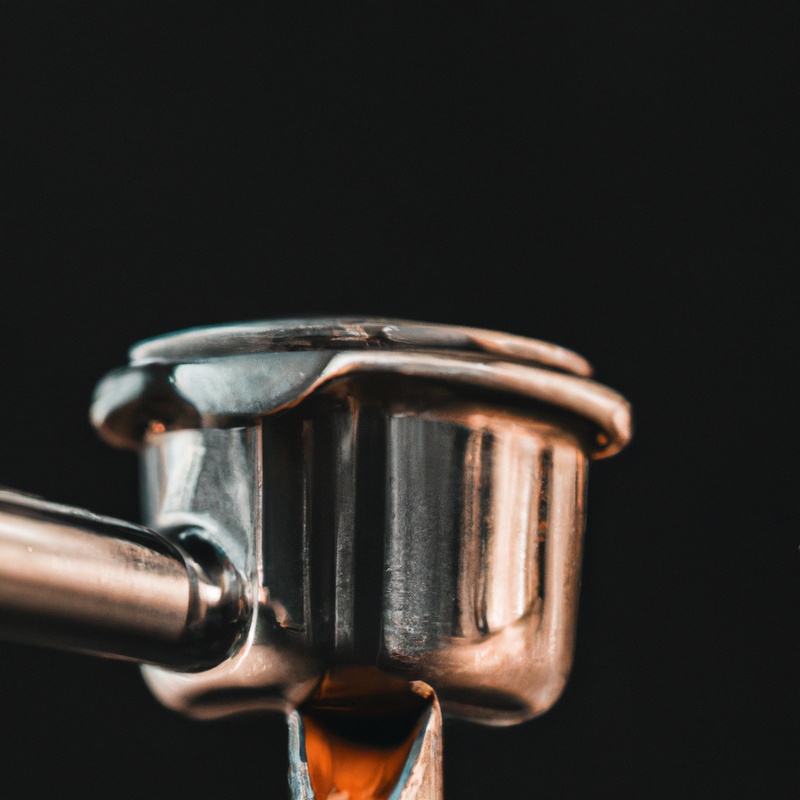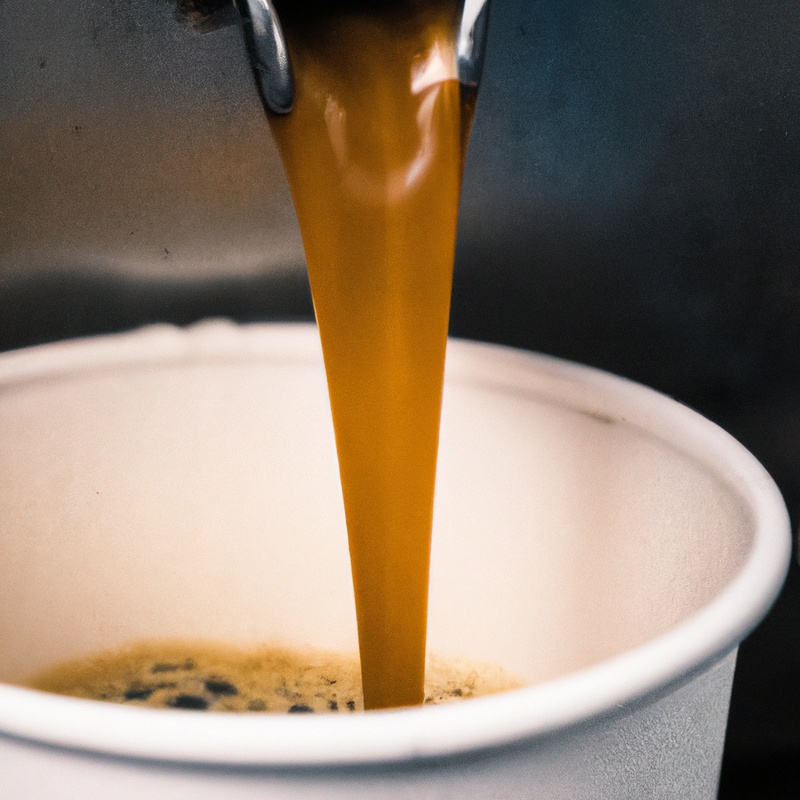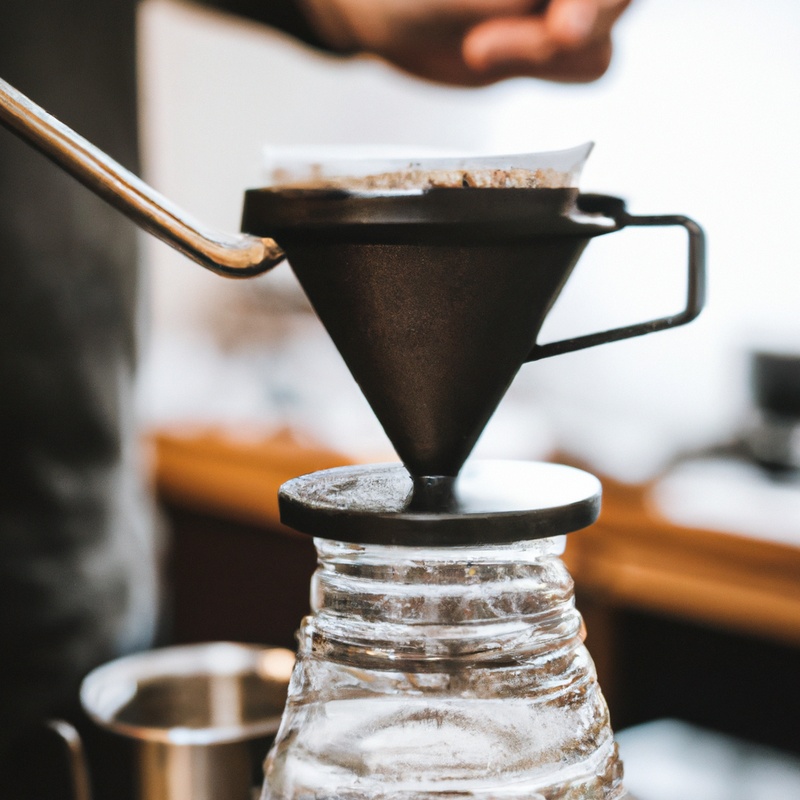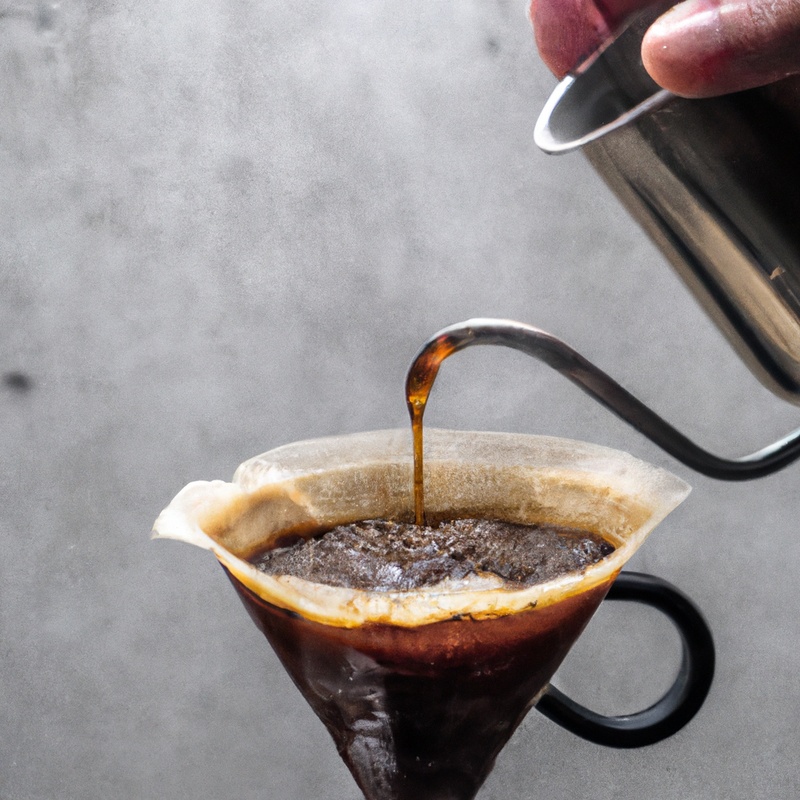Key Takeaways:
- Use a fine, medium-fine, or coarse grind size to compensate for the lack of a filter.
- Consider using alternative brewing methods such as the French press or cowboy coffee when brewing without a filter.
- Experiment with different coffee-to-water ratios to find the desired strength and flavor profile.
- Be mindful of sediment and use techniques like letting the coffee settle before pouring to minimize its presence in your cup.
Hey there coffee lovers! Imagine waking up to the perfect aroma of freshly brewed coffee, only to realize you’re out of filters. Don’t fret, because I’ve got you covered! In this article, I’ll share some amazing methods to brew your favorite cuppa without a filter.
From the classic French press to clever alternatives like metal mesh strainers and homemade cloth filters, we’ll explore the world of filter-free brewing.
Plus, I’ll answer your burning questions and provide some valuable tips to ensure a smooth and delicious cup every time. Let’s dive in and discover the art of brewing coffee sans filter!
Here is a table that outlines different methods for brewing coffee without using a filter:
| Method | Instructions |
| French Press | 1. Coarsely grind your coffee beans. 2. Place the coffee grounds at the bottom of the French press. 3. Pour hot water (between 195-205°F) over the coffee grounds. 4. Let it steep for 4 minutes. 5. Press the plunger down slowly to separate the coffee grounds from the liquid. |
| Moka Pot | 1. Grind your coffee beans to a fine consistency. 2. Fill the bottom chamber with water. 3. Place the coffee grounds in the filter basket and screw it onto the bottom chamber. 4. Screw on the top chamber tightly. 5. Place the Moka pot on a stove over medium heat. 6. Once the coffee starts to bubble, remove it from the heat and let it sit for a minute. |
| Sock Brew | 1. Place a clean sock (preferably cotton or nylon) over a cup or container. 2. Pour coarsely ground coffee into the sock. 3. Slowly pour hot water over the coffee. 4. Allow the coffee to steep for a few minutes. 5. Lift the sock with the coffee grounds out of the cup and discard. |
| Cowboy Coffee | 1. Bring water to a boil. 2. Add coffee grounds to the boiling water. 3. Reduce heat and simmer for a few minutes. 4. Remove from heat and let it sit for a couple of minutes. 5. Carefully pour the coffee into cups, ensuring that the coffee grounds remain at the bottom of the pot. |
Methods of Brewing Coffee without a Filter
Brewing coffee without a filter: various methods for making coffee without using a traditional filter.
1. Brewing Coffee Using a French Press
To brew coffee using a French press, start by adding coarsely ground coffee to the glass carafe.
Next, pour hot water over the coffee, ensuring all the grounds are saturated.
Let the coffee steep for around four minutes, stirring gently.
Finally, press the plunger down slowly to separate the grounds from the brewed coffee.
Pour and enjoy your freshly brewed cup!
2. Making Coffee with a Metal Mesh Strainer
Making coffee with a metal mesh strainer is a simple and effective method. Here’s how you can do it:
- Grind your coffee beans to a medium-coarse consistency.
- Place the metal mesh strainer over your mug or carafe.
- Add the ground coffee into the strainer.
- Pour hot water over the coffee, allowing it to steep for a few minutes.
- Slowly press the strainer down to separate the coffee grounds from the liquid.
- Enjoy your freshly brewed coffee!
Remember to clean the metal mesh strainer thoroughly after each use to prevent any residue buildup.
3. Using a Cloth or Paper Towel as a Homemade Filter
Using a cloth or paper towel as a homemade filter can be a convenient way to brew coffee without a traditional filter. Simply place the cloth or towel over the mouth of your coffee cup or container, and pour hot water and coffee grounds onto it.
Allow the coffee to steep for a few minutes, then slowly pour the brewed coffee through the makeshift filter and into your cup.
Be sure to use a thick enough cloth or towel to prevent any grounds from getting into your coffee.
4. Making Coffee with a Fine Mesh Sieve
Making coffee with a fine mesh sieve is a simple and effective method.
Grind your coffee beans to medium-coarse consistency.
Place the sieve over a cup or pot, ensuring it fits securely.
Add your coffee grounds to the sieve, and then slowly pour hot water over the grounds.
Allow the coffee to steep for a few minutes, then slowly press the grounds down with a spoon.
Finally, remove the sieve and enjoy your freshly brewed coffee.
It’s a quick and hassle-free way to make a delicious cup of joe.

5. Brewing Coffee Using a Turkish Ibrik
Brewing coffee using a Turkish ibrik is a traditional method that creates a rich and flavorful cup. Here’s how you can do it:
- Grind your coffee beans to a fine consistency, similar to powdered sugar.
- Add water to your ibrik and bring it to a boil on the stove.
- Once the water starts boiling, remove it from the heat and let it cool for about a minute.
- Add your ground coffee to the ibrik, about one heaping tablespoon per cup of water.
- Give it a quick stir and place the ibrik back on the stove over low heat.
- Let the coffee brew for a few minutes, until a foam forms on top.
- Remove the ibrik from the heat and let it sit for a minute to allow the grounds to settle.
- Pour the coffee slowly into cups, being careful to leave the grounds behind.
- Enjoy your delicious cup of Turkish-style coffee! Feel free to add sugar or spices like cardamom if desired.
Remember, the key to brewing great coffee with an ibrik is patience and attention to detail. Experiment with grind size and brewing time to find your perfect cup!

6. Using a Mason Jar and Cheesecloth to Brew Coffee
To brew coffee using a mason jar and cheesecloth, start by coarsely grinding your coffee beans. Next, place the grounds in a clean mason jar, making sure not to overfill it.
Pour hot water into the jar, covering the coffee grounds.
Stir the mixture gently and let it steep for about four minutes. After steeping, place the cheesecloth over another container and slowly pour the brewed coffee through it.
The cheesecloth will filter out the grounds, leaving you with a smooth cup of coffee.
Enjoy!

7. Making Cowboy Coffee without a Filter
To make cowboy coffee without a filter, start by bringing water to a rolling boil.
Then, add coarse coffee grounds directly into the water.
Let it simmer for a few minutes, stirring occasionally.
Remove the pot from heat and let it sit for a few more minutes.
This allows the grounds to settle at the bottom.
Finally, slowly pour the coffee into cups, being careful not to pour the grounds into the cups.
Enjoy your rustic, strong cup of cowboy coffee!
8. Using a Clever Coffee Dripper as an Alternative Filter
Using a Clever Coffee Dripper as an alternative filter is a fantastic option when you don’t have a traditional filter on hand.
Here’s how to do it:
- Start by adding your desired amount of coffee grounds into the dripper.
- Pour hot water over the coffee, ensuring it’s evenly soaked.
- Let it steep for a few minutes.
- When you’re ready, simply place the dripper on top of your cup.
- As you pour, the dripper’s valve will release the brewed coffee while keeping the grounds inside.
- Enjoy your smooth and delicious cup of coffee! The Clever Coffee Dripper is a convenient and effective alternative filter that delivers great results.
9. Making Coffee with a Vietnam Coffee Filter
The Vietnam coffee filter, also known as a phin, is a simple and effective tool for brewing coffee. Here’s how you can use it:
- Start by adding your desired amount of coffee grounds into the filter chamber. Usually, 1 to 2 tablespoons of medium to finely ground coffee works well.
- Place the filter chamber on top of your coffee mug or cup. Make sure the chamber sits securely.
- Slowly pour hot water over the coffee grounds until it reaches the top of the filter chamber. Use water that is just below boiling temperature for the best results.
- Allow the coffee to steep for a few minutes, allowing the water to slowly drip through the grounds and into your cup. The entire process can take anywhere from 4 to 6 minutes.
- Once all the water has filtered through, remove the filter chamber and enjoy your freshly brewed coffee.
The Vietnam coffee filter is a convenient and portable way to make a delicious cup of coffee without the need for a traditional filter. Give it a try and discover the unique flavors it can bring to your morning routine.
10. Using the Immersion Method to Brew Coffee
Using the immersion method to brew coffee involves steeping coffee grounds directly in hot water.
This method is popular for its simplicity and ability to extract rich flavors.
To do this, grind your coffee beans to a coarse consistency, add them to a French press or a mason jar, pour hot water over the grounds, and let them steep for around 4 minutes.
Afterward, press the plunger or strain the coffee to separate the grounds.
Enjoy your delicious cuppa!
Frequently Asked Questions (FAQs) about Brewing Coffee without a Filter
1. Is it possible to brew coffee without any kind of filter?
Yes, it is possible to brew coffee without any kind of filter.
One method is to use the “cowboy” or “campfire” technique, where a pot of water and coffee grounds are heated together and then poured carefully into cups, ensuring any coffee grounds settle at the bottom.
Another option is to use a french press, which has a built-in mesh filter to separate the coffee grounds.
2. Can I use a cloth or paper towel as a permanent solution for filtering coffee?
Using a cloth or paper towel as a permanent solution for filtering coffee isn’t recommended. While it may work in a pinch, it’s not ideal for the long term.
Cloth and paper towels can leave residue or fibers in your coffee, affecting the flavor and quality.
Plus, they may not effectively remove all the grounds, resulting in a gritty texture. It’s best to invest in a proper coffee filter for consistent and enjoyable brewing.
3. How can I prevent coffee grounds from ending up in the final cup?
To prevent coffee grounds from ending up in your cup, here are a few tips:
- Grind the coffee beans to an appropriate size: Finer grinds increase the chances of grounds slipping through. Aim for a medium grind instead.
- Use a coarser filter alternative: If you don’t have a filter, try using a French press, a reusable cloth filter, or even a fine mesh sieve to trap the larger grounds.
- Pour slowly and steadily: When pouring hot water into your coffee, do it gently and in a controlled manner. This helps minimize turbulence and prevents the grounds from being disturbed.
Remember, coffee-making is an art, and experimenting with techniques can help you find the best method that suits your taste preferences. Enjoy your cuppa!
4. Which method is the closest alternative to using a filter?
If you don’t have a coffee filter on hand, one of the closest alternatives is to use a fine-mesh sieve or a cheesecloth.
Simply place it over your cup or pot, fill it with your desired amount of coffee grounds, and pour hot water slowly over it.
Once the coffee is brewed, remove the sieve or cheesecloth and enjoy your cup of coffee.
Another option is to use a French press, which has a built-in filter that separates the grounds from the coffee as you press down the plunger.
5. Will brewing coffee without a filter affect the taste of the coffee?
Brewing coffee without a filter can indeed affect the taste of the coffee. Without a filter, the coffee grounds can end up in your brewed coffee, resulting in a stronger and sometimes grittier flavor.
The absence of a filter can also allow oils and sediment to pass through, changing the texture and overall experience of the coffee.
However, some people actually prefer this bold and rich taste that comes from brewing without a filter. It ultimately comes down to personal preference!
6. Are there any specific coffee grind sizes that work best without a filter?
Yes, there are specific coffee grind sizes that work best when brewing coffee without a filter.
Coarse grind sizes, such as those used for French press or cold brew, tend to work well without a filter.
The larger grinds allow for better water flow and minimize sediment in your cup.
Keep in mind that finer grinds, like those used for espresso, may result in a muddy and over-extracted brew without a filter.
Experiment to find the grind size that suits your taste preferences when brewing without a filter.
7. Can I use a coffee sock as a substitute for a traditional filter?
Yes, you can definitely use a coffee sock as a substitute for a traditional filter! Coffee socks, also known as coffee bags or cloth filters, are a great alternative for brewing coffee without a filter.
They are made from fabric and allow the coffee oils and flavors to pass through while catching the grounds.
To use a coffee sock, simply place it in your brewing vessel, add your coffee grounds, and pour hot water over them.
Wait for the coffee to steep, remove the sock, and enjoy your freshly brewed cup of coffee.
It’s a simple and effective method that gives you a smooth and flavorful brew.
8. What are some other creative ways to filter coffee without a filter?
One creative way to filter coffee without a filter is by using a fine mesh sieve or strainer. Simply place the sieve or strainer over your mug or cup and pour the brewed coffee through it.
This will remove any larger particles and sediment, giving you a smoother cup of coffee.
Another option is to use a clean cloth or cheesecloth to strain the coffee grounds. Just pour the brewed coffee through the cloth, allowing it to capture the grounds while allowing the liquid to pass through.
Additionally, you can try using a French press without the press.
Add the hot water and coffee grounds to the French press, let it steep, and then slowly press down on the plunger to separate the liquid from the grounds.
Tips for Brewing Coffee without a Filter
Use coarsely ground coffee beans to prevent small particles from passing through.
Be patient and allow the coffee to settle before pouring to avoid a gritty texture in your cup.
1. Use coarsely ground coffee beans
For brewing coffee without a filter, using coarsely ground coffee beans is key.
Finely ground coffee can slip through other makeshift filters, leaving you with a gritty cup.
Coarsely ground beans allow for a slower extraction, resulting in a cleaner cup.
You can adjust the coarseness based on your preferred brewing method – coarser for a French press, slightly finer for a pour over.
Experiment with different grind sizes until you find the perfect balance of flavor and clarity.
2. Be patient and allow the coffee to settle before pouring
When brewing coffee without a filter, it’s important to be patient and allow the coffee to settle before pouring. This step allows any grounds or sediment to settle at the bottom of the container, resulting in a smoother and cleaner cup of coffee.
So, after the brewing process, give it a couple of minutes for the coffee to settle before you pour it into your cup.
This simple act can make a significant difference in the taste and quality of your brew.
3. Experiment with different brewing times and techniques
When brewing coffee without a filter, don’t be afraid to experiment with different brewing times and techniques. Adjusting the time you let the coffee steep can lead to different flavors and strengths.
For a stronger brew, try extending the steeping time.
You can also experiment with techniques like the “French press” method, where you let the coffee grounds steep in hot water before pressing them down with a plunger. The key is to find what works best for your taste preferences.
Happy brewing!
4. Take care while pouring to avoid transferring grounds into the cup
When pouring your coffee, be cautious to prevent any coffee grounds from ending up in your cup.
Here are a few tips to help you avoid transferring grounds into your final brew:
- Pour slowly and steadily: By pouring slowly, you have better control over the flow of the coffee, minimizing the chances of grounds sneaking into your cup.
- Use a steady hand: Keep a steady hand while pouring to ensure a smooth and controlled movement, reducing the likelihood of grounds getting mixed in.
- Angle the pourer: Tilt the pourer slightly as you pour, aiming to keep the spout as close to the surface of the coffee as possible. This allows the liquid to flow smoothly without disturbing the grounds in the brew.
- Stop pouring before the end: As you near the end of pouring, try to leave a small amount of coffee in the container. This will help prevent any final grounds from making their way into your cup.
5. Clean and maintain your alternative filters properly
To keep your alternative filters in good condition, it’s important to clean and maintain them properly.
Here are some tips:
- Rinse the filter after each use: Rinse it thoroughly under running water to remove any remaining coffee grounds.
- Use a brush or toothpick: For deeper cleaning, use a brush or toothpick to remove any trapped particles.
- Soak in vinegar: Periodically soak the filter in a solution of vinegar and water to remove any stubborn stains or buildup.
- Dry properly: After cleaning, make sure to dry the filter completely before using it again. Wet filters can affect the taste of your coffee.
- Store in a clean, dry place: Store your alternative filters in a clean, dry place to prevent any moisture or contaminants from affecting their performance.
Final Verdict
Brewing coffee without a filter can be a convenient alternative when you find yourself without one. There are various methods you can use, such as a French press, metal mesh strainer, cloth or paper towel, fine mesh sieve, Turkish ibrik, mason jar and cheesecloth, cowboy coffee, Clever Coffee Dripper, Vietnam coffee filter, and the immersion method.
While these methods may require some experimentation and adjustments, they allow you to still enjoy a delicious cup of coffee.
Remember to use coarsely ground coffee beans, be patient, and take care while pouring to avoid grounds in your cup. Cleaning and maintaining your alternative filters are also important for optimal brewing results.
So, don’t let the absence of a filter stop you from brewing your perfect cup of coffee!
